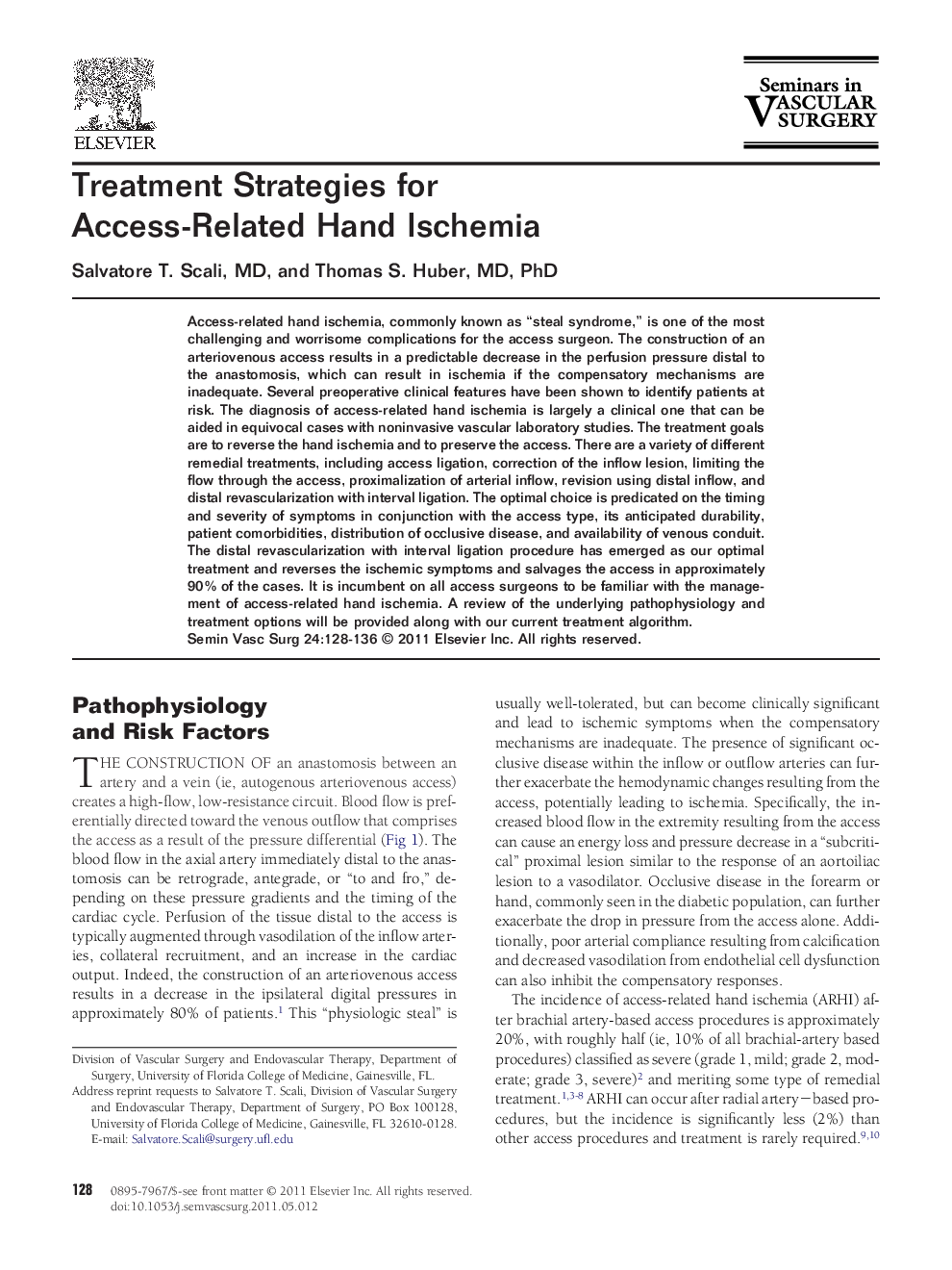| Article ID | Journal | Published Year | Pages | File Type |
|---|---|---|---|---|
| 3026221 | Seminars in Vascular Surgery | 2011 | 9 Pages |
Access-related hand ischemia, commonly known as “steal syndrome,” is one of the most challenging and worrisome complications for the access surgeon. The construction of an arteriovenous access results in a predictable decrease in the perfusion pressure distal to the anastomosis, which can result in ischemia if the compensatory mechanisms are inadequate. Several preoperative clinical features have been shown to identify patients at risk. The diagnosis of access-related hand ischemia is largely a clinical one that can be aided in equivocal cases with noninvasive vascular laboratory studies. The treatment goals are to reverse the hand ischemia and to preserve the access. There are a variety of different remedial treatments, including access ligation, correction of the inflow lesion, limiting the flow through the access, proximalization of arterial inflow, revision using distal inflow, and distal revascularization with interval ligation. The optimal choice is predicated on the timing and severity of symptoms in conjunction with the access type, its anticipated durability, patient comorbidities, distribution of occlusive disease, and availability of venous conduit. The distal revascularization with interval ligation procedure has emerged as our optimal treatment and reverses the ischemic symptoms and salvages the access in approximately 90% of the cases. It is incumbent on all access surgeons to be familiar with the management of access-related hand ischemia. A review of the underlying pathophysiology and treatment options will be provided along with our current treatment algorithm.
